After finishing fieldwork in California, I loaded up my kayak and headed north to Corvalis, Oregon to meet up with my friend Michelle, a PhD student in the ORCAA Lab at Oregon State University. Michelle and I are part of a cooperative project with OSU, Syracuse, and the National Park Service to investigate the effects of vessel noise on the vocal behavior of harbor seals (that’s my job) and humpback whales (that part is Michelle’s) in Glacier Bay National Park, Alaska. During the initial phase of planning for this project, a topnotch team of bright minded acousticians and marine mammal biologists came up with a plan to address this noise issue using a four-element underwater autonomous hydrophone array and shore-based visual observations. This project has been in the works for quite a while (i.e., years), and last week it was finally time to put our hydrophone array in the ocean!
Glacier Bay National Park is a beautifully pristine wilderness area in Southeast Alaska that’s home to drastic mountain ranges, calm blue waters, and otherworldly glaciers. The Park is not accessible by car, but despite this, over 400,000 people visit Glacier Bay each year. Visitors arrive mostly by cruise ship or other private vessels – these boats make all sorts of noise, which is what prompted the research questions behind this project.

The other option to get to Glacier Bay is to fly into Juneau, and then take a flight from Juneau to the small town of Gustavus (population: 500). Gustavus is connected to the Park via one ten-mile stretch of road. The flight from Juneau to Gustavus takes about 25 minutes, and it is by far the most beautiful flight I’ve ever taken in my entire life.

Michelle and I, along with our friend Samara (another member of the ORCAA lab), arrived in Gustavus on Monday morning, picked up our rental car from a man named Uncle Bud, and drove about a half mile down the road to our temporary Park housing. The rental car was a 1999 gold Ford Minivan with approximately 199,872 miles on the odometer and a random assortment of misbehaving dashboard lights…and it ended up being the most perfect vehicle for our trip. We then made our way over to Park headquarters to inspect the equipment that Michelle had shipped from Oregon. This included the hydrophones and all the other pieces necessary to sink hydrophones to the bottom of the ocean. You can read more about the shipping container here in Michelle’s blog.
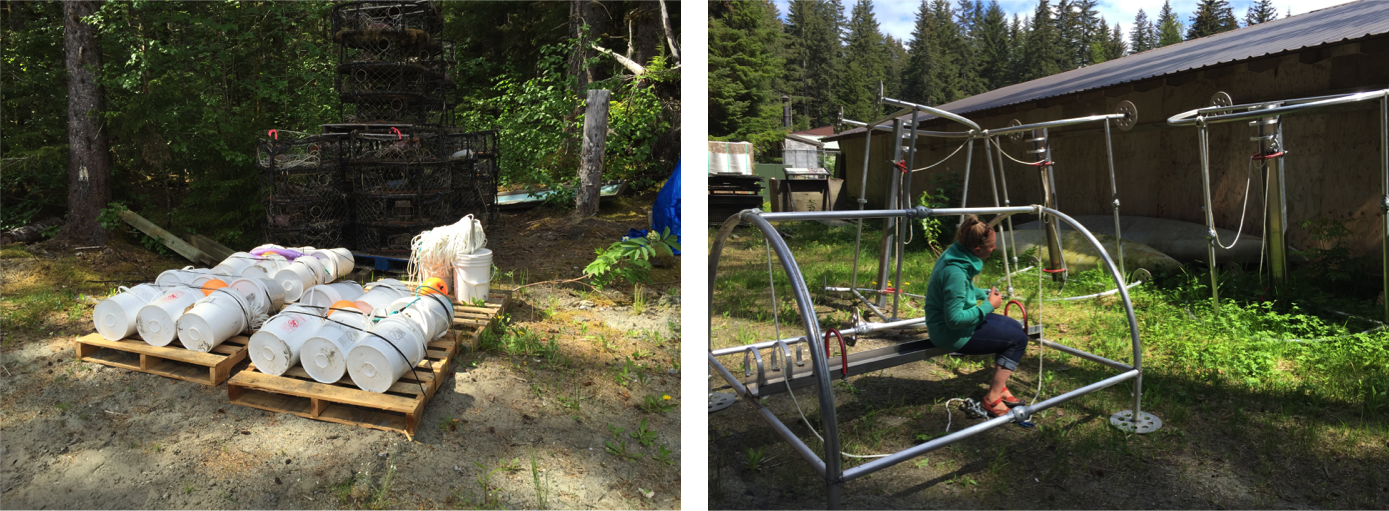
We also needed to assemble the acoustic releases. Acoustic releases are how we’re able to retrieve the instruments off the seafloor when they’re done recording. They’re attached to the landers via a 500ft line. When we’re ready to retrieve the hydrophones in a few months, we’ll send an acoustic signal to the releases, and they’ll pop up to the surface. Then, we can reel in all of our equipment and download the data.
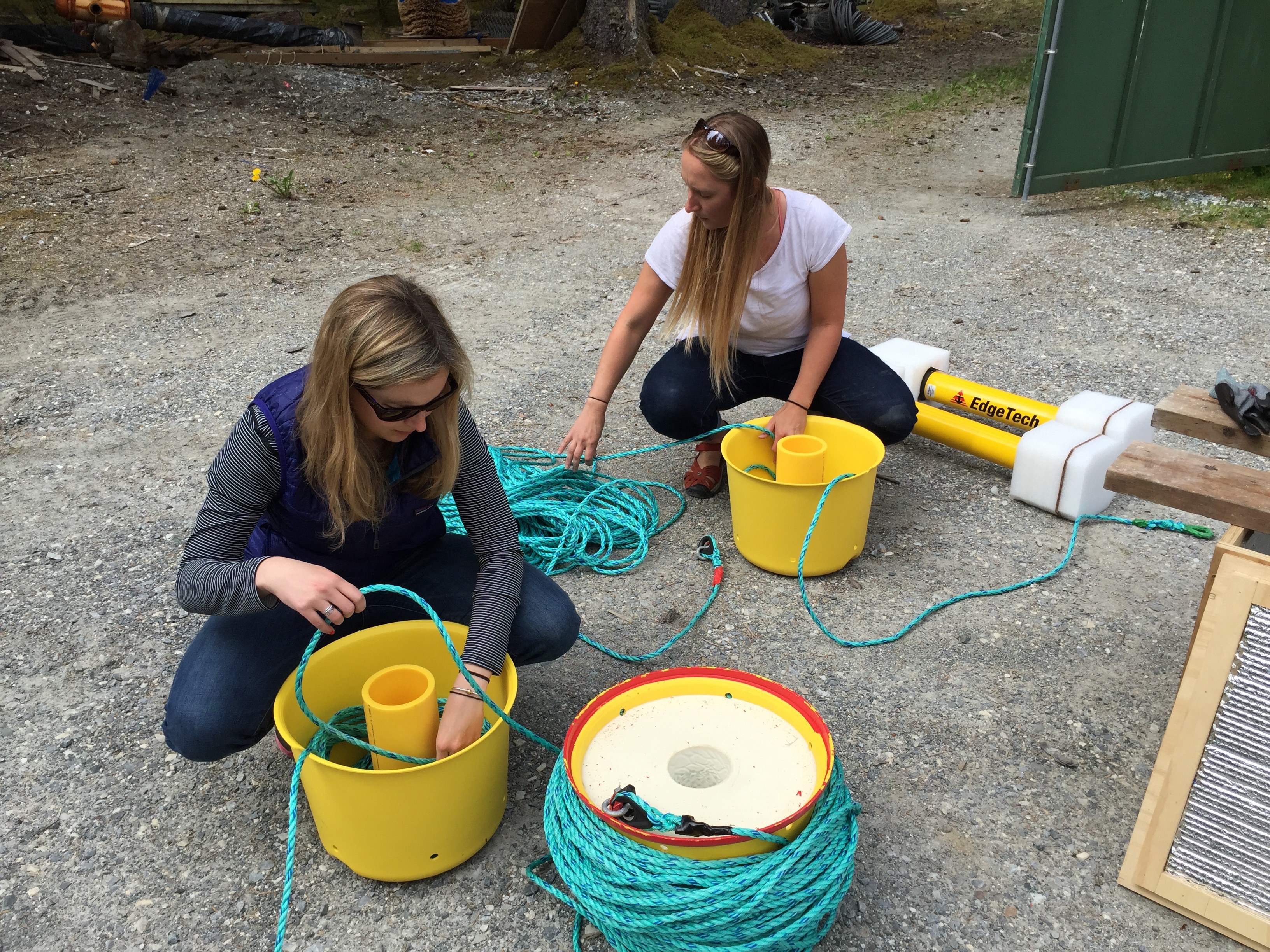
We checked everything off of our Monday to-do list and headed back to the house for a well-deserved night’s sleep. The next day, our ragtag grad student team met up with Chris Gabriele, a Park biologist who spearheaded this project, to prep the hydrophones and landers for deployment. We carried anchors (so many anchors), tightened bolts (so many bolts), electrical taped hydrophones (so much electrical tape), and zip-tied shackles (so many zip ties). The electrical tape is to deal with biofouling – the accumulation of microorganisms, plants, algae, and animals – on the hydrophones. And each hydrophone is color coded so we know which one is recording in each location.

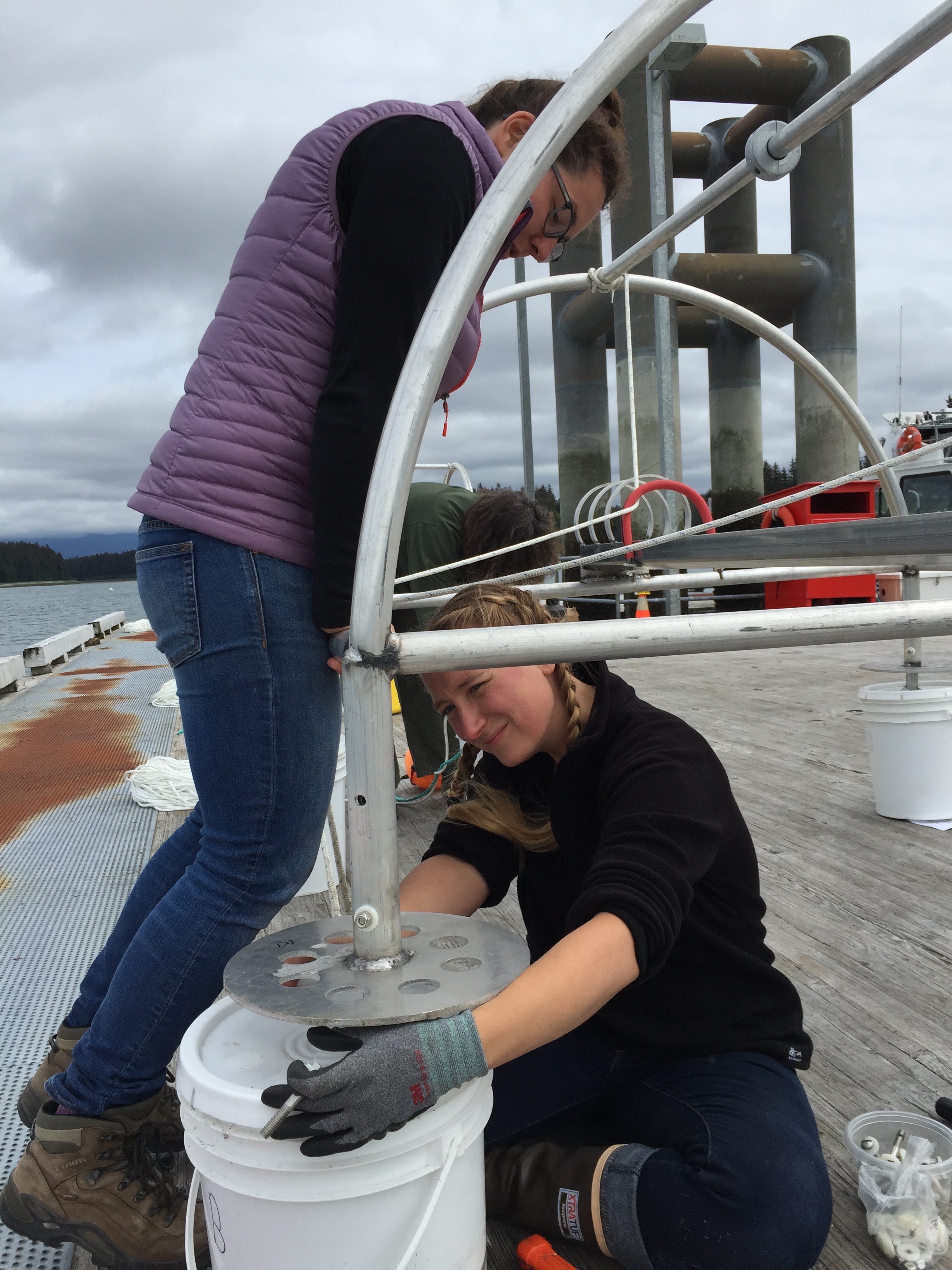
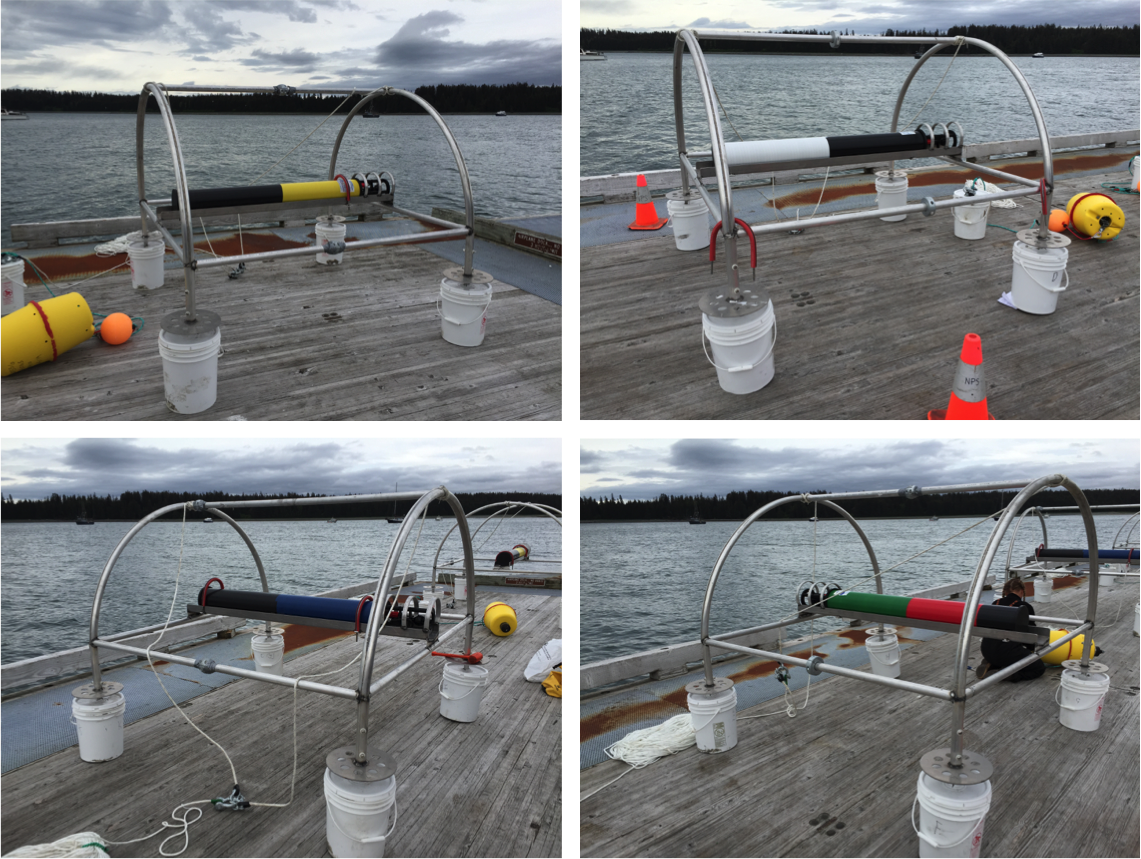
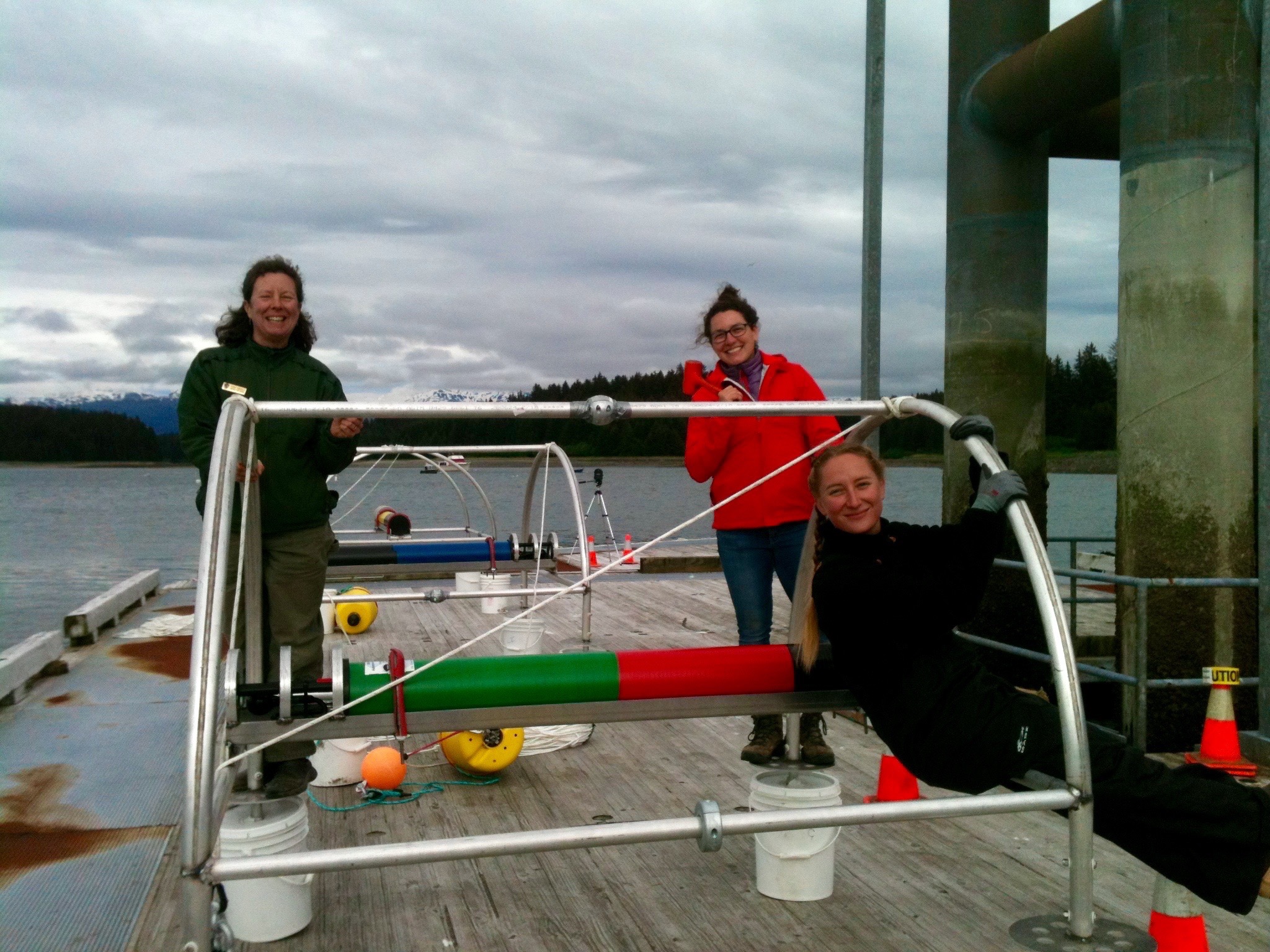
Then it was finally Wednesday! Deployment day! It was an early morning and a long day – though not as long as we had anticipated – but I’ll keep this story short and just sum it up to say that all four hydrophones and their associated acoustic releases made it safely to the bottom of the ocean. We couldn’t have done it without the help of the M/V Liteweight, Captain Paul Weltzin, and Deckhand John Michael.
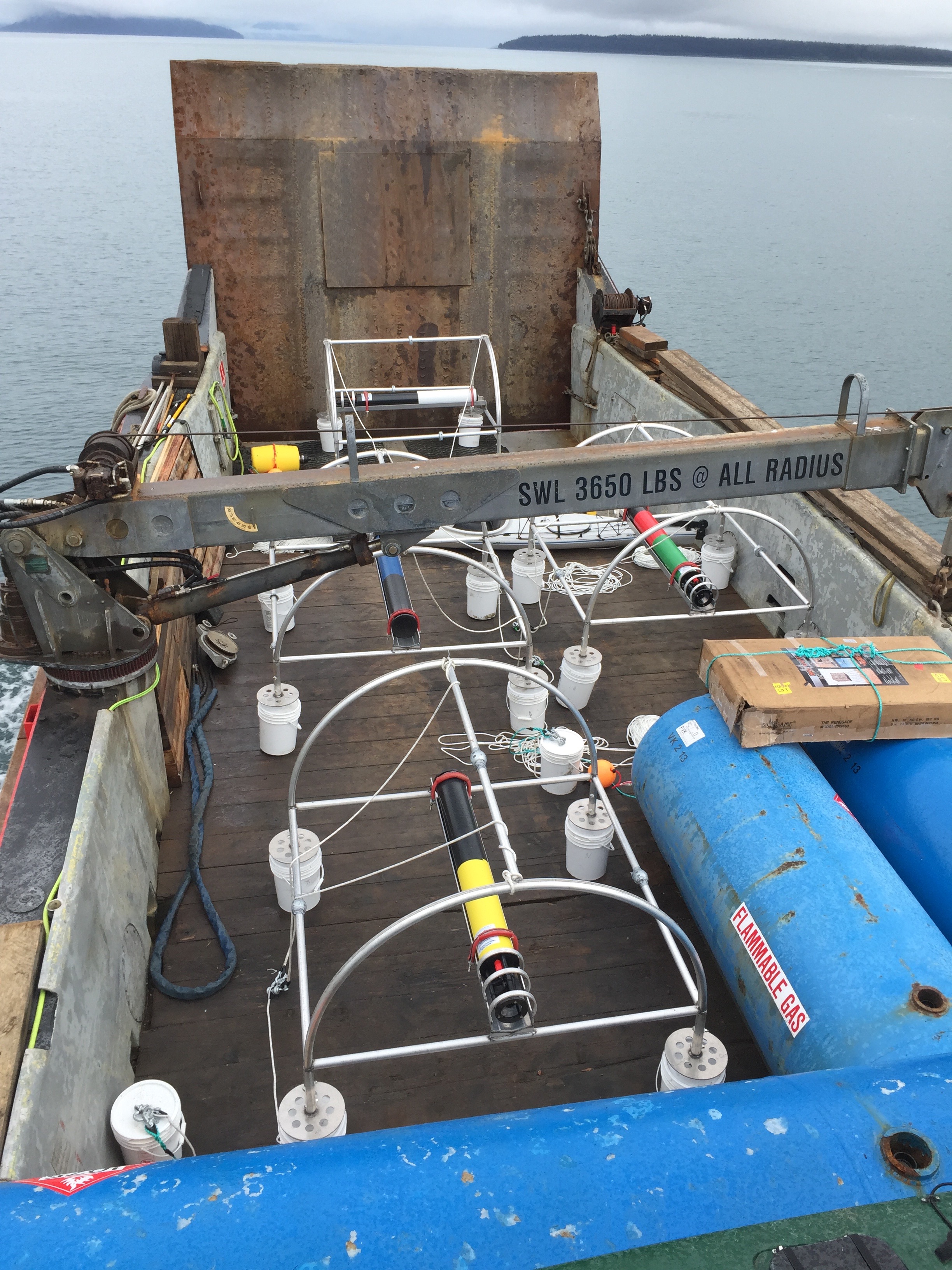
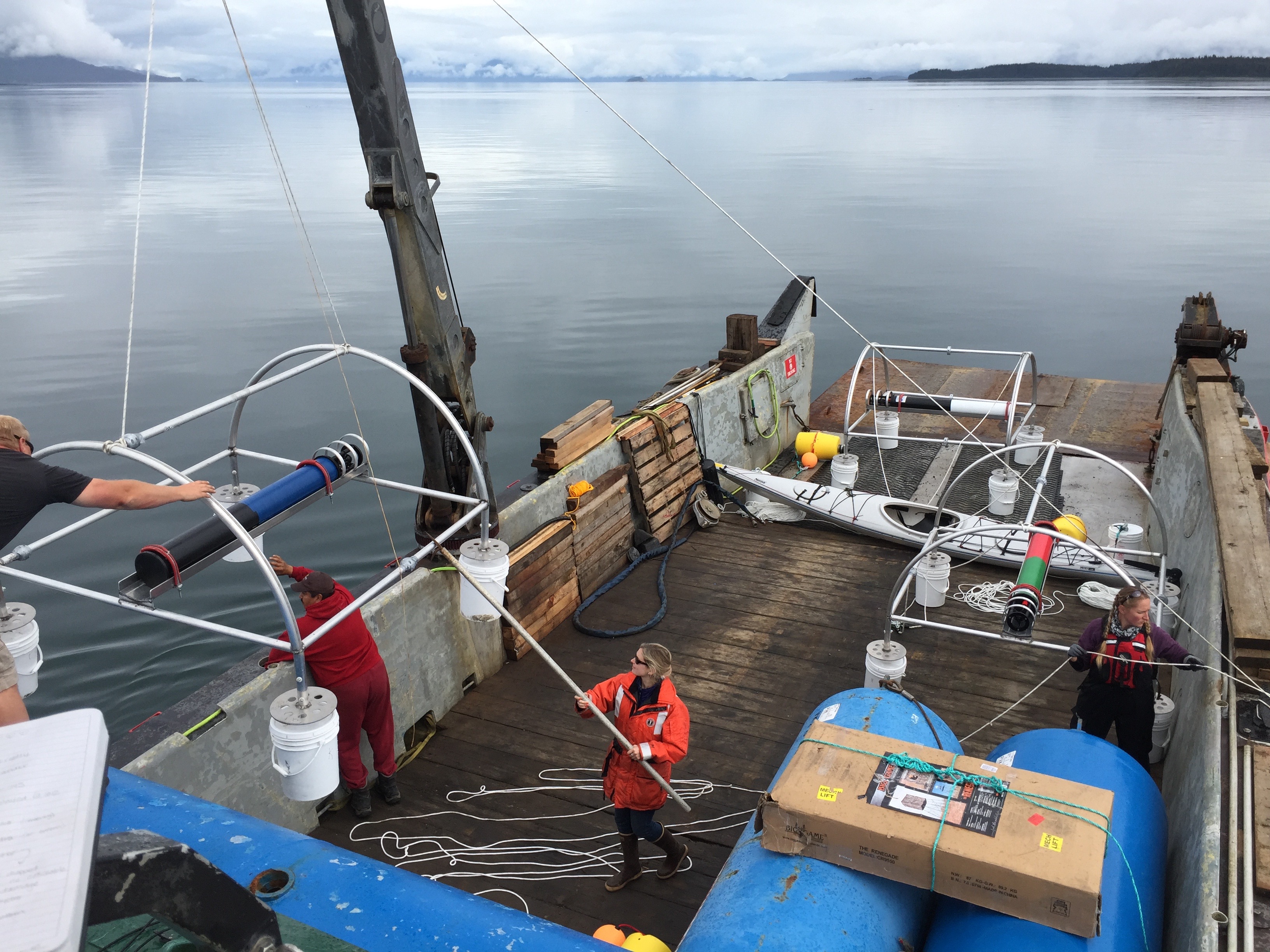
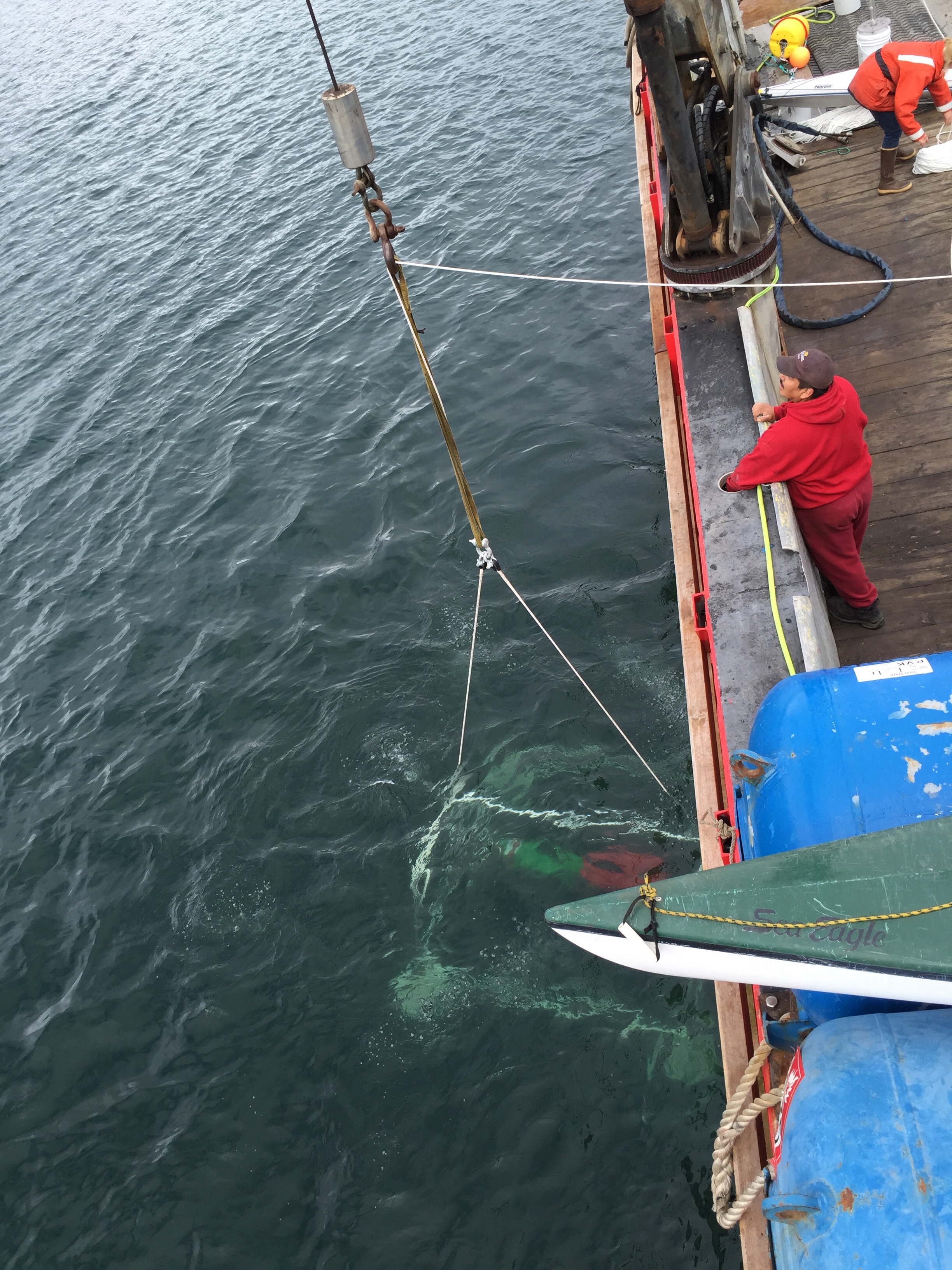
The next day we focused on preparing the base camp for our shore-based visual observations. Samara, Michelle, and I spent most of our energies building a hunting blind. Clearly it won’t be used for hunting anything, but it’s the perfect height for a panoramic view of the array area. From this vantage point, the field team will be able to conduct scan surveys of whales and seals and focal follows of whales – the perfect behavioral complement to our acoustic data.

That afternoon was spent cruising around with Chris dropping a dip hydrophone in various locations and looking/listening for whales and seals. We spotted tons of animals in the array area, including harbor seals, humpback whales, stellar sea lions, harbor porpoises, and sea otters. We heard a faint humpback vocalization, lots of boat noise, but no seal calls. Not surprising though, since it’s still a little early in the season.

Friday morning we talked sampling protocols over coffee and discussed Michelle’s return trip to Glacier Bay in a few weeks. This summer, Michelle and a team of four undergraduate students will be living on the island in Glacier Bay to conduct the shore-based observations. Unfortunately, I won’t be able to join them for the field season, but *fingers crossed* I’ll probably be able to swing a trip next summer to help out with data collection.

Another clear-skied flight back to Juneau on Friday and a lovely weekend with friends was the perfect ending to a successful deployment trip. And now we wait! Come October, Michelle and I will return in Glacier Bay to recover our hydrophones and download our data. Until then, I will relish in Alaska’s overwhelming beauty and prepare for the onslaught of data that will be arriving in just a few short months.
